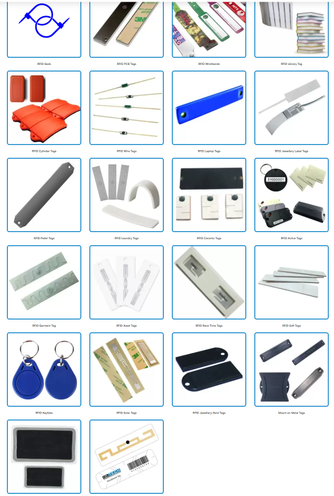An RFID tag, at its core, consists of two components – an antenna for transmitting and receiving signals, and an RFID chip (or integrated circuit, IC) storing the tag’s ID and other data. These tags are attached to items, facilitating their tracking using an RFID reader and antenna. Efficiency is paramount in inventory management. Saving time with increased accuracy poses an ongoing challenge for inventory managers across industries. Utilizing RFID Technology in inventory management, where each item is equipped with an RFID Tag and strategically placed readers or handheld RFID readers are used for rapid inventory, is rapidly gaining traction. This trend is driven by complexities arising from the sheer volume of inventory items, the rapid technological advancements, and the ever-expanding retail sector.
Moreover, current inventory management methods rely on manual counting processes or manual barcode scanning, both of which are time-consuming and not always accurate, resulting in potential sales losses or poor customer experiences.
Selecting the right RFID Tag for your inventory management system is crucial for its success. Below are some key considerations when choosing the appropriate RFID Tag:
- Size & Form Factor: The size of the tag directly impacts its read range. Choosing the size based on the form factor of the RFID tags, such as wet inlays, labels, hard tags, or high-temperature tags, is essential.
- Read Range: The appropriate read range, determined by the chip and RFID reader, should align with the application requirements, typically ranging from 3 feet to 12 feet.
- Attachment Method: Various attachment options, including adhesive, magnet, screw, riveting, stitching, or hot stamping, are available and can also be customized.
- Mounting Surface: Selecting the right tag for the existing mounting surface is crucial for optimal RFID performance. Metal surfaces, for instance, require specific Mount on metal tags rather than standard labels or tags.
Hundreds of RFID tags are available in diverse shapes and sizes, offering options tailored to specific environments, surface materials, and applications. Choosing the ideal tag for the application, environment, and item material is vital for optimal performance.
A successful inventory management system provides a clear, accurate view of inventory always. It offers item-level visibility and maintains historical records, enabling a chain of custody for each product. Users can track a specific product's journey from arrival to sale, allowing for detailed reports on product trends, replenishment information, and product visibility and display success.
Read Our More Related Blogs –
https://www.idsolutionsindia.com/various-rfid-applications-across-industries/

